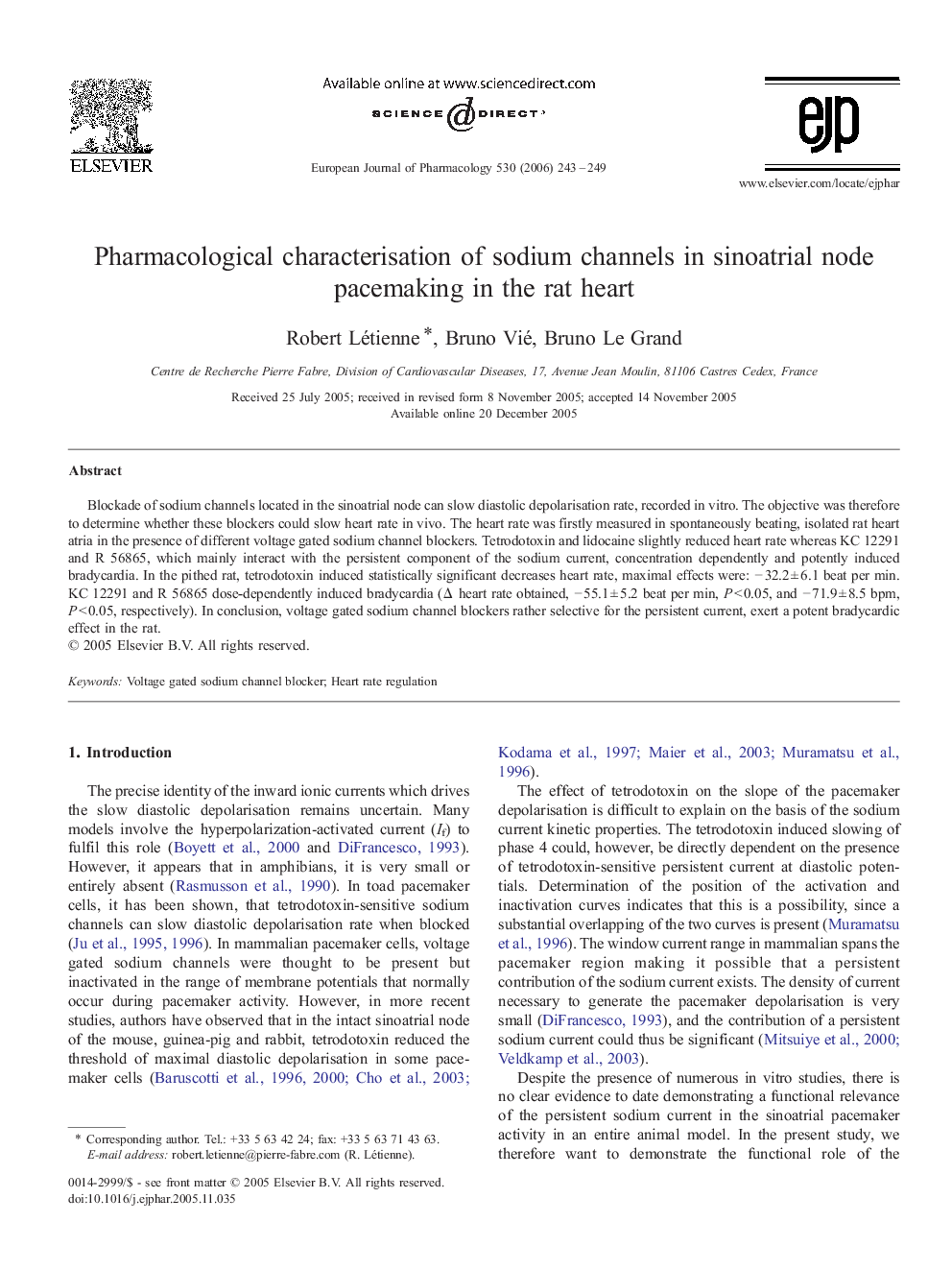| Article ID | Journal | Published Year | Pages | File Type |
|---|---|---|---|---|
| 2537449 | European Journal of Pharmacology | 2006 | 7 Pages |
Blockade of sodium channels located in the sinoatrial node can slow diastolic depolarisation rate, recorded in vitro. The objective was therefore to determine whether these blockers could slow heart rate in vivo. The heart rate was firstly measured in spontaneously beating, isolated rat heart atria in the presence of different voltage gated sodium channel blockers. Tetrodotoxin and lidocaine slightly reduced heart rate whereas KC 12291 and R 56865, which mainly interact with the persistent component of the sodium current, concentration dependently and potently induced bradycardia. In the pithed rat, tetrodotoxin induced statistically significant decreases heart rate, maximal effects were: − 32.2 ± 6.1 beat per min. KC 12291 and R 56865 dose-dependently induced bradycardia (Δ heart rate obtained, − 55.1 ± 5.2 beat per min, P < 0.05, and − 71.9 ± 8.5 bpm, P < 0.05, respectively). In conclusion, voltage gated sodium channel blockers rather selective for the persistent current, exert a potent bradycardic effect in the rat.
